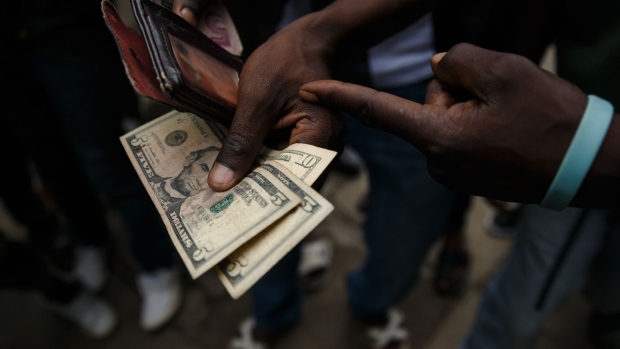Nov 3, 2023
Zimbabwe’s Central Bank Sees Use of Dollars Offering Policy Consistency
, Bloomberg News

(Bloomberg) -- Zimbabwe’s decision to keep using US dollars until 2030 allows for policy consistency, after previous currency turmoil eroded market confidence, according to the country’s central bank governor.
The government extended use of the greenback for another five years after uncertainty over the initial 2025 deadline had curbed lending by banks and funding for long-term investments.
“The government is showing that it’s doing things in an orderly” way, Reserve Bank of Zimbabwe Governor John Mangudya said by phone on Thursday. “This statutory instrument is important as it gives confidence to banking customers that their deposits are safe and secure.”
Read More: Zimbabwe Extends Dollar Use by Five More Years Until 2030
The greenback has remained the dominant currency in the southern African as the value of the Zimbabwe dollar has been eroded by high inflation. About 80% of all transactions in the economy are done in the US dollar, according to the national statistics agency.
Zimbabwe’s currency crisis in the past has led to major losses suffered by everyone from ordinary citizens to lenders and foreign investors, who either lost their earnings overnight or were unable to repatriate funds. The government wants the retirement industry to compensate pensioners who lost their savings as a result of hyperinflation and a subsequent decision in 2009 to scrap the local unit.
The Zimbabwe dollar was reintroduced in 2019 and the US currency was banned but that decision was reversed less than a year later as the coronavirus pandemic hit.
With an extra five years before the use of the US dollar is outlawed, authorities have enough time to ensure that there is stability during the transition to a mono-currency system, according to Mangudya.
“We think that de-dollarization is a process, not an event,” he said.
©2023 Bloomberg L.P.






